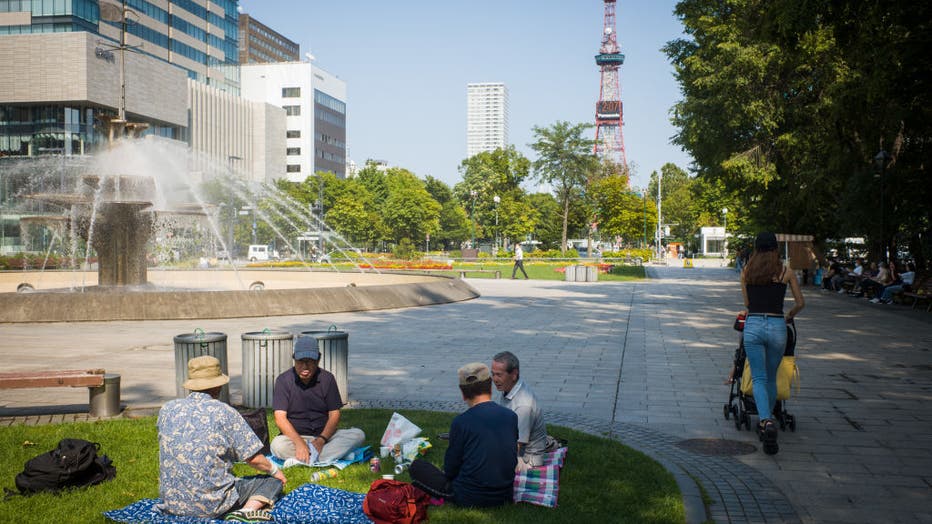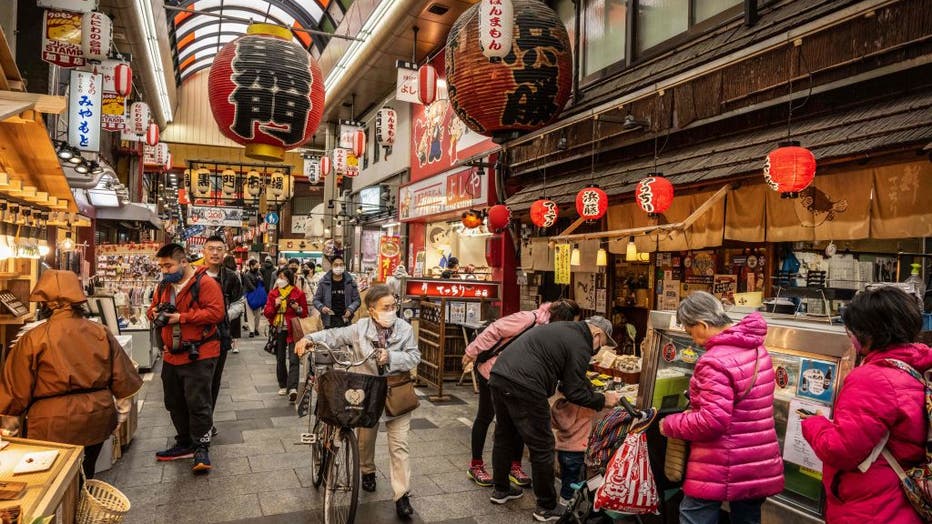Why now is the best time to visit Japan, thanks to a weak yen
The recent dramatic plunge in the Japanese yen has transformed Japan into a prime destination for budget-conscious American tourists.
With the yen reaching 160 to the dollar before stabilizing around 156 yen, U.S. travelers should expect to find prices in Japan more favorable, reminiscent of currency values not seen since 1990. This significant shift in the financial landscape offers a unique opportunity to explore Japan's rich culture and stunning landscapes without breaking the bank.
The depreciation in the yen's value means that every dollar stretches further, allowing visitors from the United States to enjoy a wealth of experiences at reduced costs. Here's how you can make the most of your travel dollars in Japan:
How to maximize your travel budget in Japan
Kyoto: A blend of history and affordability
In Kyoto, travelers can immerse themselves in the city's ancient history with visits to the Golden Pavilion (Kinkaku-ji) and the endless red gates of Fushimi Inari Shrine, both offering free or low-cost entry.

FILE - Kinkaku-ji Temple, also known as the Golden Pavilion, photographed in Kyoto, Japan. Photo by: Planet One Images/Universal Images Group via Getty Images (Photo by: Planet One Images/Universal Images Group via Getty Images)
Economical dining options include sampling street food at Nishiki Market, where specialties like tako tamago (candied octopus with a quail egg) are must-tries.
Tokyo: Diverse experiences on a dime
Tokyo offers a mix of traditional and modern attractions. Visit the Imperial Palace Gardens for a serene escape, or dive into the energy of Shibuya and Harajuku, all without spending much.

Imperial Palace Gardens in Chiyoda-ku, Tokyo City, Japan. Photo by: Dukas/Universal Images Group via Getty Images (Photo by: Dukas/Universal Images Group via Getty Images)
For affordable dining, check out Ramen Street in Tokyo Station where eight renowned ramen shops serve up bowls perfect for a budget. Don’t miss Tonkatsu Maisen Aoyama Honten in Omotesando for some of the best breaded pork cutlet in Tokyo.
Hokkaido: Nature and gourmet delights
Hokkaido offers breathtaking natural beauty alongside unique culinary experiences. Budget travelers can enjoy both at places like Otaru, where canal-side cafes offer views and treats.
Be sure to try the region’s famous seafood, particularly at kaitenzushi (conveyor belt sushi) restaurants like Toriton Kaitenzushi in Sapporo, where high-quality sushi is surprisingly affordable.

FILE - People sit on the grass at Sapporo Odori Park in Sapporo, Japan. (Photographer: Kentaro Takahashi/Bloomberg via Getty Images)
For a memorable visit, don’t miss Odori Park in Sapporo, the most visited tourist attraction in Hokkaido. This expansive park is the heart of the city and offers a peaceful escape with its beautiful fountains and seasonal flowers.
Osaka: The kitchen of Japan
Osaka is not only "the kitchen of Japan" famed for its street food like takoyaki (octopus balls) and okonomiyaki (savory pancakes) in Dotonbori but also a fashion hub. Visit Matsusakagyu Yakiniku M for budget-friendly, top-rated dining where you grill your own wagyu beef.
Beyond cuisine, Osaka's Kojima area, known as the Denim District, is a treasure trove for high-quality, artisanal denim. Despite typically high prices, the favorable exchange rate now makes these luxury garments more accessible to American visitors.

FILE - People browsing the bustling Kuromon Market in Osaka. (Photo by YUICHI YAMAZAKI/AFP via Getty Images)
More things to do in Japan
Japan's vast array of activities and attractions caters to diverse interests, offering something for everyone. While it's impossible to cover all that Japan has to offer, here are some key experiences you won't want to miss:
- Cherry Blossoms and Urban Wildlife: Experience the serene beauty of cherry blossoms at Ueno Park in Tokyo or watch the deer roam freely at Nara Park.
- Iconic Castles: Visit majestic sites like Himeji Castle, known for its striking white architecture and expansive grounds.
- Cultural Hotspots: Dive into the vibrant and quirky atmosphere of Akihabara in Tokyo, a paradise for tech enthusiasts and anime fans.
- Relaxing Hot Springs: Unwind in the famous onsens of Hakone or Beppu, where natural hot springs offer a soothing escape.
- Spiritual Sites: Reflect at the peaceful Zen temples of Kyoto, such as Ryoan-ji, famous for its rock garden.
- Culinary Adventures: Sample the fresh sushi at Tsukiji Fish Market in Tokyo or indulge in Sapporo's famous miso ramen.
- Scenic Rides: Take a scenic ride on the Shinkansen (bullet train) and witness the changing landscapes from city skylines to rural vistas.
- Historical Walks: Stroll through the preserved samurai district in Kanazawa, offering a glimpse into Japan’s feudal past.
Navigating Japan: key travel tips for tourists
Planning your trip to Japan involves some practical considerations to ensure a smooth journey. Here are essential tips on connectivity, power, and handling cash.
Staying connected: travel eSIM cards
Before your trip to Japan, it's a good idea to get a travel eSIM card like Ubigi. An eSIM is a digital version of a SIM card that lets you access cellular data without needing a physical card.
Ubigi provides flexible, affordable data plans that you can manage directly from your device, making it easy to stay connected for navigation and internet access without the hassle of local SIM cards.
Power and charging: Japanese power outlets
Japan uses Type A and Type B outlets, similar to the US, but the voltage is 100 volts. Check if your devices need a voltage converter to prevent damage.
Handling cash: exchanging money
Many smaller venues outside major cities still only accept cash. For the best exchange rates, swap dollars for yen at foreign exchange banks or post offices in Japan, rather than at airports.
This story was reported from Los Angeles.

